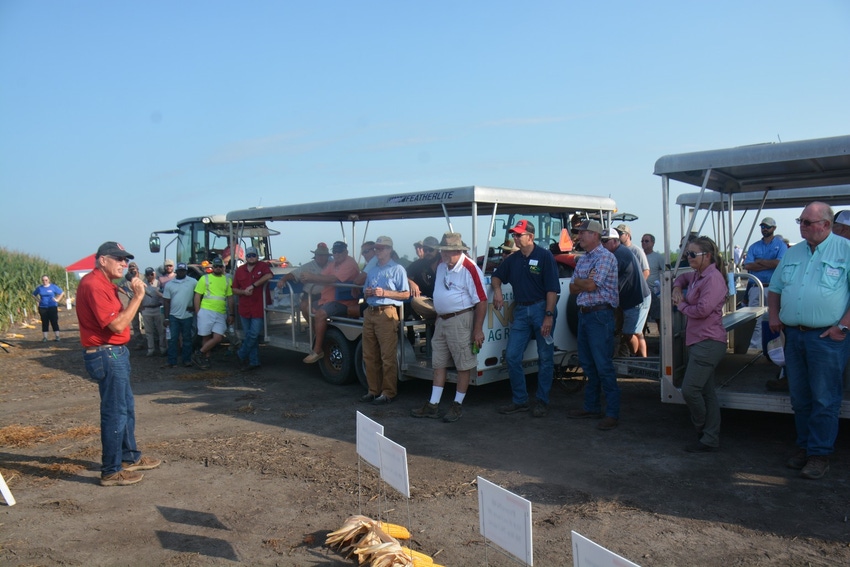
The old rule of thumb of corn fertility that one pound of nitrogen equals one bushel of corn doesn’t always apply. Farmers especially need to remember that in these days of high fertilizer prices.
Speaking at the Blackland Farm Managers Tour at Southland Farms & Howell Farms in Pantego, N.C., Aug. 3, North Carolina State University Extension corn specialist Ron Heiniger said farmers should not sacrifice nitrogen if it lowers their yield.
“As we increase nitrogen rates, our yield increases. At some point, that levels out. As long as we are in this rising line of yield, we’re making money. For every $1 or $1.10 I’m spending on nitrogen, I’m getting a bushel of corn. Yield is king. Even at my highest nitrogen rate, 250 pounds, I think I’m going to make money. As long as I’m on that rising line, I’m good. But what happens when it starts to flatten out? Now I’m spending $1.10 for nothing,” Heiniger said.
He told the farmers they are in the Walmart business.
“How does Walmart survive? Everything that goes across the scanner, they’re making a few pennies on. That’s what you’re doing here with nitrogen in the corn business. As long as you’re making yield, every acre will add to total yield and that adds up to profit. But the moment you start losing money, you’re losing big money,” Heiniger noted at a tour stop where he discussed a nitrogen rate trial being conducted at the site.
In the study, Heiniger and his North Carolina State colleagues are looking at fertility rates from 50 pounds per acre to 250 pounds per acre. While the 50-pound rate still produces ears on the corn stalk, Heiniger made it clear no farmer would use that low a rate if he wanted to make a profitable yield.
“I don’t want to spend any more than I have to, but I don’t want to leave yield in the field,” he said.
Heiniger said that the week before the Blackland Farm Mangers Tour, he spoke at the Northeast Ag Expo Field Day in Camden in northeastern North Carolina. He pointed out that the soils there are Roanoke soils, compared to the dark soils of the North Carolina Blackland. In the Roanoke soils following potatoes, Heiniger said farmers could get by with just 100 pounds of nitrogen per acre and not sacrifice yield. But that’s not the case in the Blackland, where the optimal rate is closer to 200 pounds of nitrogen per acre.
“These dark soils release a ton of nitrogen. As long as we don’t saturate these soils, they’re releasing organic nitrogen,” Heiniger said.
He encouraged Blackland farmers to find treatments that allow the soil to release more nitrogen or to fix more nitrogen, where every pound of nitrogen makes another bushel of corn. “We’re still finding pounds of nitrogen without having to apply it as commercial fertilizer.”
About the Author(s)
You May Also Like






